For nine seasons (eleven if you count All Stars,) RuPaul’s Drag Race has been the eye-opening and awe-inspiring reality competition show that has exposed a nation to the nuances and artistry of drag. As new sets of queens enter the competition, and as the audience becomes more familiar with this subculture, new lessons are taught and new identities for the show are cultivated.
And each season – unique in its own way – has represented specific values and facets of the show, and of drag in general.
Here are 9 lessons of Drag Race…
Season 1: Exposure to Different Styles of Drag
How about we take this to the next level?
Our newsletter is like a refreshing cocktail (or mocktail) of LGBTQ+ entertainment and pop culture, served up with a side of eye-candy.

Typically in the first season of a competition show, the contestants play things safe, as no bar has yet been set and they’re not aware of how far the show will allow them to take their craft. But season 1 of RuPaul’s Drag Race premiered with guns ablazing with some really eccentric and unique queens who were like nothing else the bulk of the viewers were likely to have seen before.
While some of the queens focused on how passable they looked as women, standouts Nina Flowers and Ongina threw caution to the winds of femininity with their glamorous androgyny – still untouched to this day in the competition – and Shannel gave you opulence with her immaculate showgirl costumes, proving to a pre-Drag Race audience that this was a serious artform and something that deep pride is taken in.
Finally, winner Bebe Zahara-Benet, immersing drag in her culture and Cameroon background, showcased drag’s international appeal and applications. It’s obvious why Ru chose these queens to represent most people’s first time being exposed to drag: She wanted to open up our minds immediately to all of the possibilities. And these girls did not let us down.
Season 2: The High-Stakes of the Competition

With Bebe setting the high bar of what it means to be a winner in this competition and to be a part of the legacy that Ru had created, the second batch of girls have been some of most competitive for the crown in the history of the show.
This strong sense of competitiveness was even broadcasted in the first ever season of Untucked, where we finally got to see what conversations take place right before the girls are selected for the chopping block. This season was filled to the brim with talented and charismatic beauties, which in itself calls for cattiness and drama of course. But it was the hunger and the pride of the queens in this season that made it a stand out and many viewers’ favorite season to this day.
With the controversial Tyra Sanchez winning the crowd over audience favorites Raven and Jujubee, this was the season that proved to the world that this was not “RuPaul’s Best Friend Race,” – even before Lashawn Beyond had coined the term – and that first and foremost, this was a competition with a stringent report card.
Season 3: The Value of Resourcefulness and Style

Every Drag Race fan knows Season 3 as the season of the sewing challenges. With a whopping four garment-design based challenges, it’s no surprise that at the head of the competition were conceptual fashion plates Yara Sofia, Manila Luzon and the winner herself, Raja. From Manila Luzon’s literal but beautiful Big Bird and Pineapple ensembles, to Yara Sofia’s gravity-defying hair contraptions, to pretty much everything Raja dawned, this was a season of design and fashion that still lives in our hearts years later.
And the legendary battle of Heathers vs Boogers would beg the question of how important looks were over other entertainment values in the competition. But with the two most en pointe queens battling it out in a lipsync to RuPaul’s “Champion” for the crown in the end, it was a sure sign that this show was going to not only take the artistry of design and the world of fashion seriously, but also turn it on its head.
Season 4: Drag’s Diverse Applications

Sharon Needles said it best: “I refer to [Season 4 of Drag Race] as ‘the freak show.’ Our cast consisted of a four-foot fish queen, a black Divine impersonator, a pudgy lollipop enthusiast, a witch and, oh, CHER! Something America truly has never seen before.” Season 4 was truly a standout, as it featured queens who not only contrasted each other visually, but each had their own unique take on what the artform of drag truly was.
From the pride Phi Phi and Kenya took in looking like glamorous women, to Willam’s use of drag to portray cross-dressers and trans women on television, to Chad’s unmatched abilities to impersonate and embody real life women, to Sharon’s use of drag to wave a freak flag in society’s face, they all brought something to the artform that was legitimate, inspired and at times, fantastically bizarre. And we couldn’t have fallen more in love with this season for it.
Season 5: The Value of Comedy

In contrast to Season 3, where design challenges were plentiful, Season 5 was chock-full of comedy challenges. From hosting an innuendo-filled children’s TV program, to acting out over the top Telenovelas, to straight up roasting RuPaul herself Kraft Music Hall-style, the girls were told to tickle our funny bones in almost every single episode. Even during their ballet performances and the challenge where they created perfume ads – where you’d think comedy had no place – the queens who made us crack up, placed the highest.
This aspect of the competition drove funny ladies Alaska and Jinkx Monsoon straight to the top, with Jinkx’s win being slightly controversial as her fashion sense was questioned all throughout the season. But once again, the report cards in this competition don’t lie. No one before Jinkx had ever made top scores eight weeks in a row. And Jinkx’s well-deserved victory taught a country of Drag Race fans that the look does matter, but so does the entertainment value. In a way, I believe that that’s the message my girl Honey was trying to express all along about San Francisco queens. I guess the San Francisco queens do know what’s up *exhales on acrylic nails*
Season 6: The Battle of the Polished vs. the Polish Remover

Towards the end of this season, there would be a category of queens who were considered to be seasoned and dusted (Bianca Del Rio, Courtney Act,) and a category of queens who the judges considered to have much room for improvement, (Joslyn Fox, Trinity K Bonet and Adore Delano.) While Bianca and Courtney were visually appealing and polished, receiving gold stars for almost every challenge and never falling into the bottom two the entire season, the girls who were considered underdogs were the heart of the season, and the reason why Season 6 of Drag Race would be so beloved.
Adore Delano fell into the bottom several times in the competition, lip-synced for her life twice and was read for filth on the runway half the episodes, and yet she impacted the competition so strongly that a believable alternate ending of the show was shot where Bianca and Adore would both be crowned the winners. It taught the audience that while seasoned perfectionist Bianca did win in the end, that a contestant’s impact on the competition can take a contender far, despite a low report card.
Season 7: The Validity of the Old and New Styles of Drag

Season 7 proved to be one of the least friendly seasons in the show’s history, despite the new and more personal format of Untucked. As the competition heated up and the number of girls began to dwindle down, a divide formed between the older queens, who were highly seasoned entertainers, and the younger queens, who were ready to make daring stylistic changes to the art of drag.
The older queens, or Bitter Old Lady Brigade, as Ginger has called them, were used to the classic styles of drag, from lots of padding, big hair, over the top garments. With many coming from pageant backgrounds, they valued competitiveness and the ability to take on a wide variety of performance challenges.
On the other hand, the modelesque younger queens were ready to take the world of fashion by storm with their brand of drag. From Violet Chachki’s corseted 18 inch waist, to Pearl’s minimalistic flowy garments, to Max’s modern take on vintage garments, to Miss Fame’s revolutionary makeup methods, this season was full to the brim with memorable high-fashion moments. But many of these girls struggled during performance-based challenges and ultimately their fashion sense couldn’t save some of them from the chopping block.
The girls battled it out all season long, trying to convince those of the other team to see value in what they do. The older queens constantly put down the younger queens for not padding their bodies enough, not being more cut-throat or passionate in the same way as them and not having as much range in performance value. While the younger queens felt that the Bitter Old Lady Brigade were so focused on the competition that they weren’t focused enough on being artistic or creative.
While there’s right and wrong in the arguments of both sides, there was a recurring and sensitive theme throughout the entire season: Body positivity and representation. Jasmine Masters made negative remarks about Violet’s ultra-slim figure, Ginger and Jaidynn did their damndest to be a positive and fearless representation of full-figured individuals and people constantly criticized Pearl and Violet for not padding their bodies “enough.” The topic always arose and begged the question of what bodytype was ideal for the artistry of drag. Ultimately, we got our answer when the top four included full-figured pageant queens Ginger and Kennedy Davenport, and modelesque Pearl and Violet. That all along, there was no right or wrong bodytype for drag. It was all about finding the garments that worked for you…and not dressing up like a bedazzled chicken on fire.
Season 8: The Sisterhood of Drag

After tackling the least friendly season, we now move onto the most friendly and loving group of girls to be on the show in a while. This was probably the most drama-free season of Drag Race to ever exist. The fights on the show were particularly mild and the fights on Untucked were almost non-existent.
During Seasons 4 and 5, the drama was so juicy and the fights were so heated that you yourself almost felt uncomfortable merely sitting at home watching Untucked on a laptop 9 months after the drama already happened. Whereas this season, when the designated villains Derrick Barry and Acid Betty were ready to get into an argument, they rarely had takers. There were moments when Derrick put down Naomi or Bob, or even when Acid Betty put down Kim Chi. But many of the contestants were focused on doing well for the judges moreso than each other, and so the fights never lasted more than a few minutes and never rose past a 5/10 on the Drag Race drama scale.
And ultimately, the top three was made up of some of the friendliest people in the competition. To this day, Naomi, Kim Chi and Bob are extremely close and support each other’s shows and work constantly. They represent a sisterhood in a community that can many times be dismissed as being full of catty and vain people. Proving that – believe it or not – this very important and big-hearted side of drag doesn’t only exist in the workroom as the queens powder their noses in handheld mirrors.
Season 9: Life’s Second Chances

Season 9 is not yet over yet as of press time, and already it is the season of redemption and second chances.
From Cynthia Lee Fontaine’s return to the competition, to Eureka’s offer to compete in Season 10 after sustaining a leg injury and being forced to leave the show prematurely, to Cynthia and Farrah both getting to continue in the competition after Eureka’s departure, this season is full of hopeful storylines.
But more importantly, it gives the queens chances to talk about the very important second chances life has offered them. From several queens admitting their former battles with eating disorders, to Charlie Hides discussing his survivor’s guilt after friends had passed during the height of the AIDS crisis in the 80s, to Cynthia “kicking cancer in the cucu,” these queens represent what RuPaul has always believed to be the main theme of the show: The tenacity of the human spirit.
While Drag Race has been greenlit for a tenth season, no one quite knows how many years we have left with this program. But regardless of the future direction the show takes, it’s been clear from the beginning what the point of it all has been. And that’s to show the viewer what people in general are capable of.
The show is about so much more than just men in wigs. It’s about what you can make of your life despite the natural adversity and rejection life puts in our way. And that’s the one takeaway guaranteed every single season.





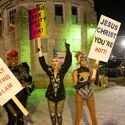


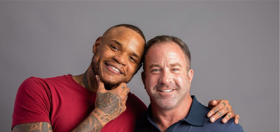





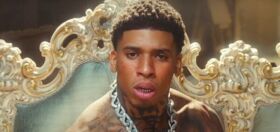



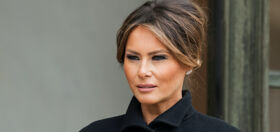
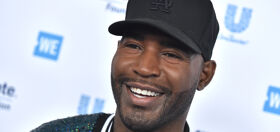
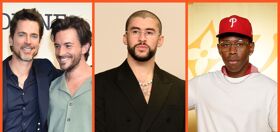
He BGB
Queens need to be more talented than just make up and clothes. It wasn’t until later that we started seeing more of this. Just being able to command a stage, be a character, tell jokes, be witty (Bianca has all the above)….do any queens have someone at home who designs and sews all the costumes and then when they appear on the show, can’t sew, use glue guns, steal other queens’ ideas? I think we know the answer to that.
DCguy
The first two seasons looks seemed to be taken into WAAAAYYYY too much consideration.
Rebecca stayed so long, and in season two, Tyra over Raven or JuJu? I mean Tyra looked great, but I don’t think that would ever have happened today.
gary69mike
There are definitely some pretty rough looking queens this season that even tons of makeup can’t hide.